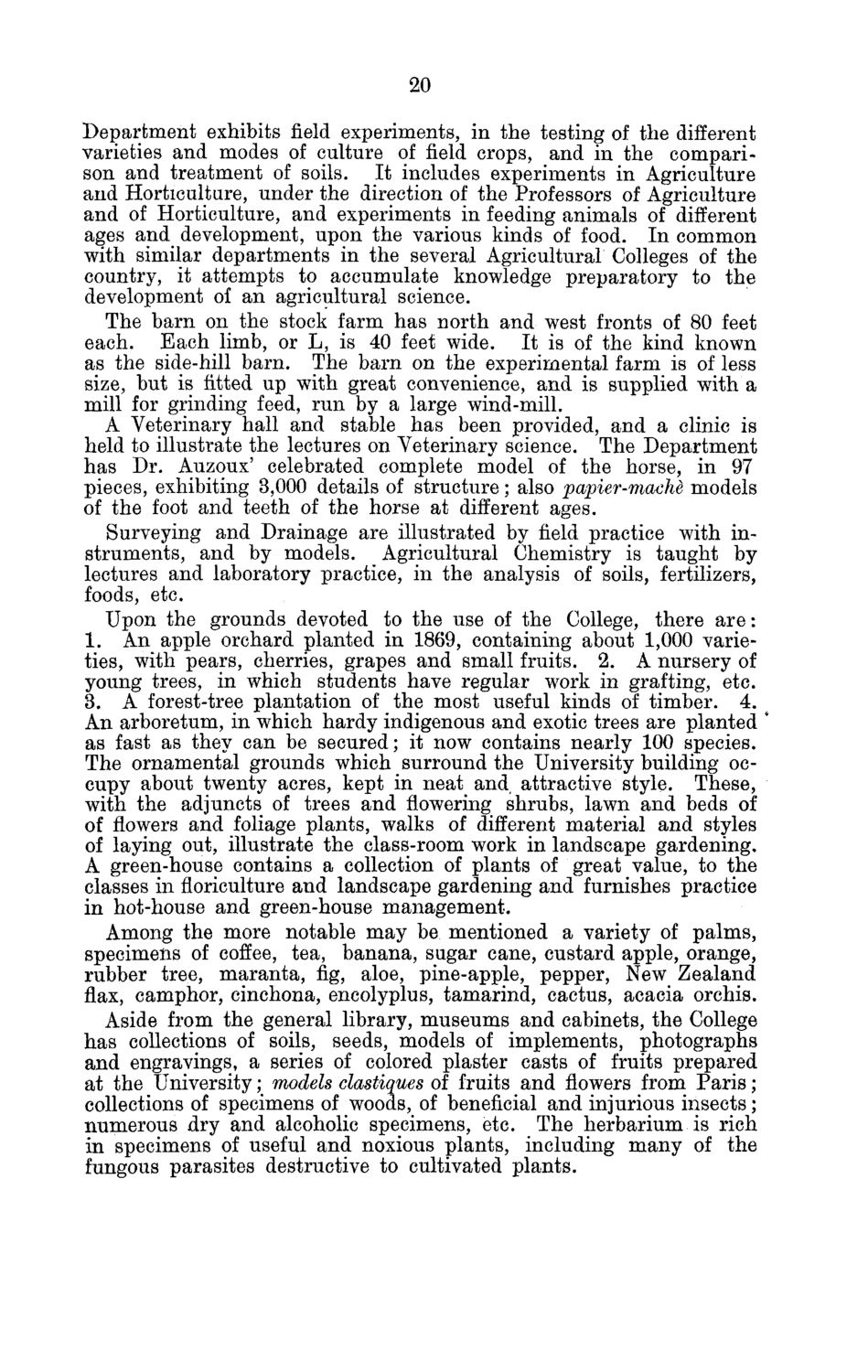| |
| |
Caption: Board of Trustees Minutes - 1880
This is a reduced-resolution page image for fast online browsing.

EXTRACTED TEXT FROM PAGE:
20 Department exhibits field experiments, in the testing of the different varieties and modes of culture of field crops, and in the comparison and treatment of soils. It includes experiments in Agriculture and Horticulture, under the direction of the Professors of Agriculture and of Horticulture, and experiments in feeding animals of different ages and development, upon the various kinds of food. In common with similar departments in the several Agricultural Colleges of the country, it attempts to accumulate knowledge preparatory to the development of an agricultural science. The barn on the stock farm has north and west fronts of 80 feet each. Each limb, or L, is 40 feet wide. It is of the kind known as the side-hill barn. The barn on the experimental farm is of less size, but is fitted up with great convenience, and is supplied with a mill for grinding feed, run by a large wind-mill. A Veterinary hall and stable has been provided, and a clinic is held to illustrate the lectures on Veterinary science. The Department has Dr. Auzoux' celebrated complete model of the horse, in 97 pieces, exhibiting 3,000 details of structure; also papier-mache models of the foot and teeth of the horse at different ages. Surveying and Drainage are illustrated by field practice with instruments, and by models. Agricultural Chemistry is taught by lectures and laboratory practice, in the analysis of soils, fertilizers, foods, etc. Upon the grounds devoted to the use of the College, there a r e : 1. An apple orchard planted in 1869, containing about 1,000 varieties, with pears, cherries, grapes and small fruits. 2. A nursery of young trees, in which students have regular work in grafting, etc. 3. A forest-tree plantation of the most useful kinds of timber. 4. t An arboretum, in which hardy indigenous and exotic trees are planted * as fast as they can be secured; it now contains nearly 100 species. The ornamental grounds which surround the University building occupy about twenty acres, kept in neat and attractive style. These, with the adjuncts of trees and flowering shrubs, lawn and beds of of flowers and foliage plants, walks of different material and styles of laying out, illustrate the class-room work in landscape gardening. A green-house contains a collection of plants of great value, to the classes in floriculture and landscape gardening and furnishes practice in hot-house and green-house management. Among the more notable may be mentioned a variety of palms, specimens of coffee, tea, banana, sugar cane, custard apple, orange, rubber tree, maranta, fig, aloe, pine-apple, pepper, New Zealand flax, camphor, cinchona, encolyplus, tamarind, cactus, acacia orchis. Aside from the general library, museums and cabinets, the College has collections of soils, seeds, models of implements, photographs and engravings, a series of colored plaster casts of fruits prepared at the University; models clastiques of fruits and flowers from Paris; collections of specimens of woods, of beneficial and injurious insects; numerous dry and alcoholic specimens, etc. The herbarium is rich in specimens of useful and noxious plants, including many of the fungous parasites destructive to cultivated plants.
| |